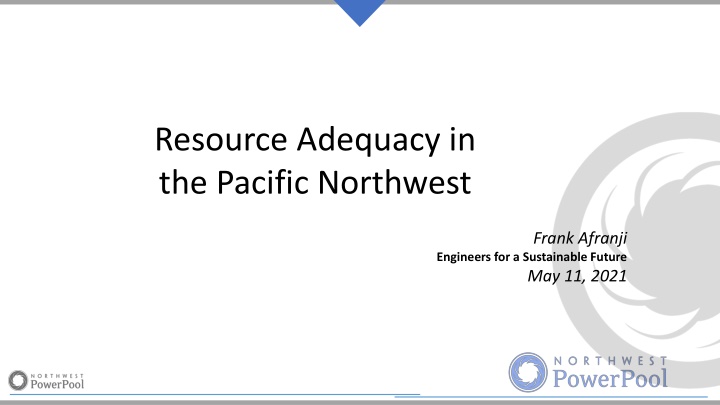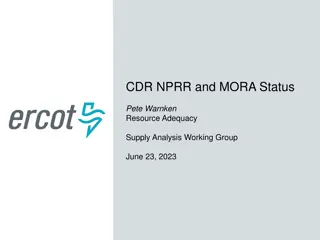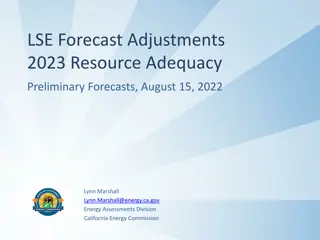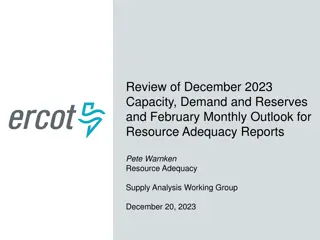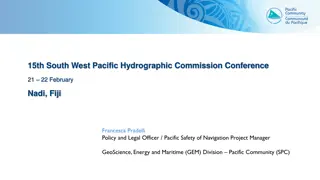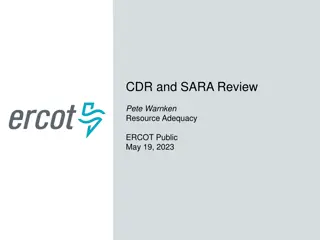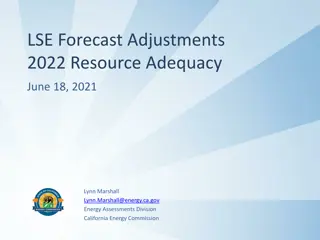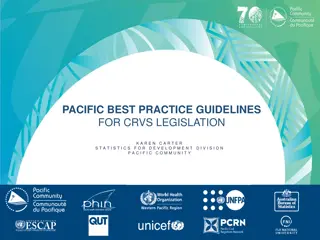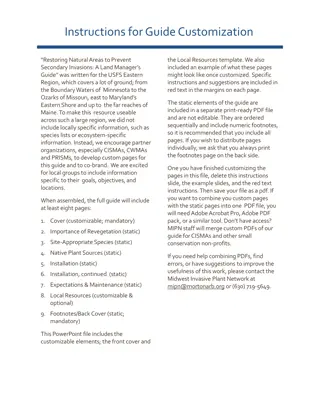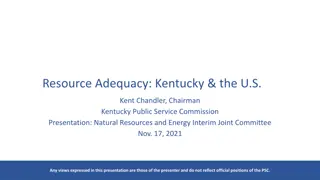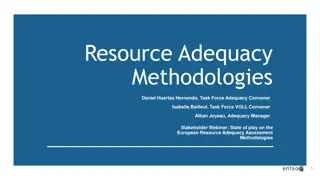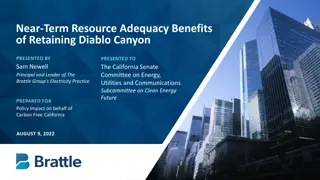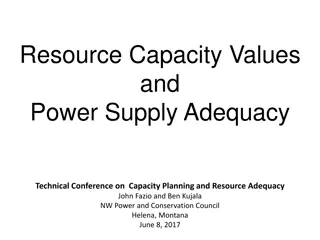Resource Adequacy in the Pacific Northwest
The Northwest Power Pool (NWPP) ensures coordinated operations among member organizations to maximize benefits and maintain reliability in the region's electricity supply. With a focus on transition to cleaner energy sources and membership from various utilities, NWPP plays a crucial role in shaping the future of power generation in the Pacific Northwest.
Download Presentation

Please find below an Image/Link to download the presentation.
The content on the website is provided AS IS for your information and personal use only. It may not be sold, licensed, or shared on other websites without obtaining consent from the author.If you encounter any issues during the download, it is possible that the publisher has removed the file from their server.
You are allowed to download the files provided on this website for personal or commercial use, subject to the condition that they are used lawfully. All files are the property of their respective owners.
The content on the website is provided AS IS for your information and personal use only. It may not be sold, licensed, or shared on other websites without obtaining consent from the author.
E N D
Presentation Transcript
Resource Adequacy in the Pacific Northwest Frank Afranji Engineers for a Sustainable Future May 11, 2021
WHAT IS THE NORTHWEST POWER POOL The Northwest Power Pool (NWPP) Corporation assures Member organizations achieve maximum benefits of coordinated operations Core values: customer-driven, relationship-based, independent and operating with great integrity
WHAT IS THE NORTHWEST POWER POOL The NWPP Membership is a voluntary organization and is made up of the following members: Members include: Alberta Electric System Operator, Avangrid, Avista, BANC, BC Hydro,BPA, Calpine, Chelan PUD, Columbia Grid, Cowlitz PUD, Douglas County PUD, Energy Keepers, Inc. EWEB, Fortis BC, Grant PUD, Grid Force, Idaho Power, NaturEner, NorthWestern Energy, NV Energy, PacifiCorp, Pend Orielle PUD, Perennial Power, PGE, Powerex, Excel Energy, PSE, Seattle City Light, Snohomish PUD, Tacoma Power, TID, US Army Corps, Bureau of Reclamation, Western Area Power Administration
A REGION IN TRANSITION Coal retirements losing firm resources when the region already has relatively tight load-resource balance 3,000 MW of coal resources will come offline in the next two years New state policies demand a shift to a cleaner electricity supply portfolio Oregon Senate Bill 1547 increased the state s RPS to 50% in 2016 Washington Senate Bill 5116 established goals of carbon neutrality in 2030 and carbon-free by 2045 Utilities acting on their own combination of policy and economics Avista and Idaho Power have pledged 100% clean electricity by 2045 PacifiCorp, PSE, Idaho Power proposing early retirements of coal
WHY NORTHWEST POWER POOL The Northwest Power Pool was established in 1941 and since that time has been coordinating resources to maximize efficient electricity production The NWPP today coordinates a number of different programs essential to the reliable operation of the NW power grid including: Reserve sharing program Pacific Northwest Coordination Agreement Western Frequency Response Sharing Group Training
MULTIPLE STUDIES AGREE THAT THE NW IS APPROACHING A PERIOD OF CAPACITY SHORTFALLS NW Capacity Surplus / Deficit in Recent Studies US WECC Coal Retirement Scenarios Note: WECC also publishes a resource adequacy assessment, but it focuses only on summer, whereas resource adequacy is primarily a winter issue for the Northwest Note: Coal retirement scenarios developed by NWPP IRP Team. From research of announced and potential retirements from across the US WECC.
How did we get here The NWPP report: Exploring a Resource Adequacy Program for the Pacific Northwest, 2019 identified planning deficiencies in NWPP s footprint Planning is state- and utility-specific Planning entities use different standards and methods As a result, the region lacks insight into its overall resource situation As a result of the 2019 Report, NWPP and its member utilities are moving forward to design a regional RA program for NWPP members
IRP needs assessment method Weighted by peak load Weighted by number of utilities Deterministic Other stochastic Other stochastic (1) Deterministic (5) Deterministic / percentile 1-outage in- 10 years (3) 1-outage-in- 10 years Percentile Loss-of-load probability (3) Deterministic/per centile (1) Loss-of-load- probability Percentile (2) Data from IRP survey. Missing data filled in when possible.
Wind & solar peak contribution varies Depends on: Location Season of stress Existing portfolio Analysis method Missing data excluded. Blanks are zeros.
DIVERSITY BENEFITS TWOMAINFORMS TTW Two Main Forms TT Winter Summer Load Diversity Resource Diversity Noncoincident Peak 80,000 MW 86,000 MW Coincident Peak 76,000 MW 84,000 MW Approximate Estimated Load Diversity 4,000 MW 2,000 MW Approximate Estimated Resource Diversity (3% NCP) 2,400 MW 2,600 MW Total Diversity 6,400 MW 4,600 MW
Key program design elements Adequacy/Reliability metric Governance Program operation and monitoring Supply/demand forecast metrics Resource eligibility Deliverability requirements Capacity determinations Outage rates Import qualifications
Benefits of a regional RA program Benefits of a regional RA program TRANSPARENCY - Regional approach to RA can inform a more comprehensive solution - Consistent standards among members EFFICIENCY - Opportunity to access diversity benefits CONFIDENCE - Confidence in regional RA needs
OVERVIEWOF PROJECT TIMELINE Stage 1 Stage 2 Stage 3 Stage 0 Binding Forward Binding Forward Showing Program Showing Program ( (May include May include Operation Lite Operation Lite) ) Binding Forward Binding Forward Showing Showing + + Full Operational Program Operational Program Full Non Non- -Binding Forward Binding Forward Showing Program Showing Program Interim Solution Interim Solution Phase 2A: Preliminary Design Oct 2019-Jun 2020 Phase 2B: Detailed Design Jul 2020-early 2021 Phase 3: Implementation Mid 2021-2024 15
1 6 https://www.nwpp.org/resources/ Thank you!
